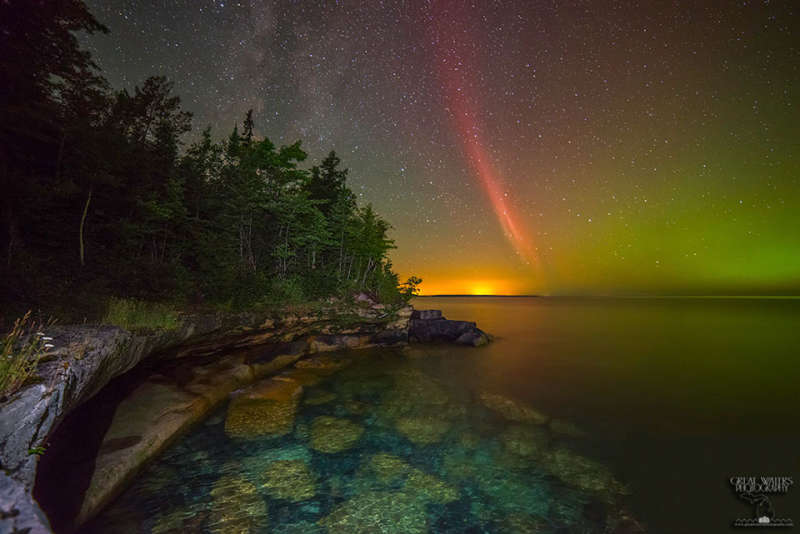Credit & Copyright: Ken Williams
Explanation:
The setting had been picked out -- all that was needed was an aurora.
And late last August,
forecasts
predicted
that an otherwise beautiful night sky would be lit up with
auroral green.
Jumping into his truck, the astrophotographer approached his secret site --
but only after a five hour drive across the rural
Upper Peninsula
of Michigan.
What he didn't know was that his luck was just beginning.
While setting up for the image, a
proton arc -- a rare type
of aurora -- appeared.
The red
arc lasted only about 15 minutes, but that was long enough to capture in a 30-second
exposure.
As the name indicates,
proton
arcs
are caused not by
electrons but
by more massive
protons that
bombard
the Earth's atmosphere following an
energetic event on the Sun.
In the featured
image,
the yellow lights on the horizon are the city lights of
Marquette,
Michigan,
USA.
The blue and yellow rocks in the
Lake Superior foreground
are lit by a
LED flashlight.
Also captured, to the left of the red proton arc, was the band of our
Milky Way Galaxy.
APOD Editor to Speak: Saturday, August 8 at
Keweenaw Science & Engineering
Festival
1999 2000 2001 2002 2003 2004 2005 2006 2007 2008 2009 2010 2011 2012 2013 2014 2015 2016 2017 2018 2019 2020 2021 2022 2023 2024 2025 |
Yanvar' Fevral' Mart Aprel' Mai Iyun' Iyul' Avgust Sentyabr' Oktyabr' Noyabr' Dekabr' |
NASA Web Site Statements, Warnings, and Disclaimers
NASA Official: Jay Norris. Specific rights apply.
A service of: LHEA at NASA / GSFC
& Michigan Tech. U.
|
Publikacii s klyuchevymi slovami:
aurora - polyarnoe siyanie - nochnoe nebo
Publikacii so slovami: aurora - polyarnoe siyanie - nochnoe nebo | |
Sm. takzhe:
Vse publikacii na tu zhe temu >> | |
